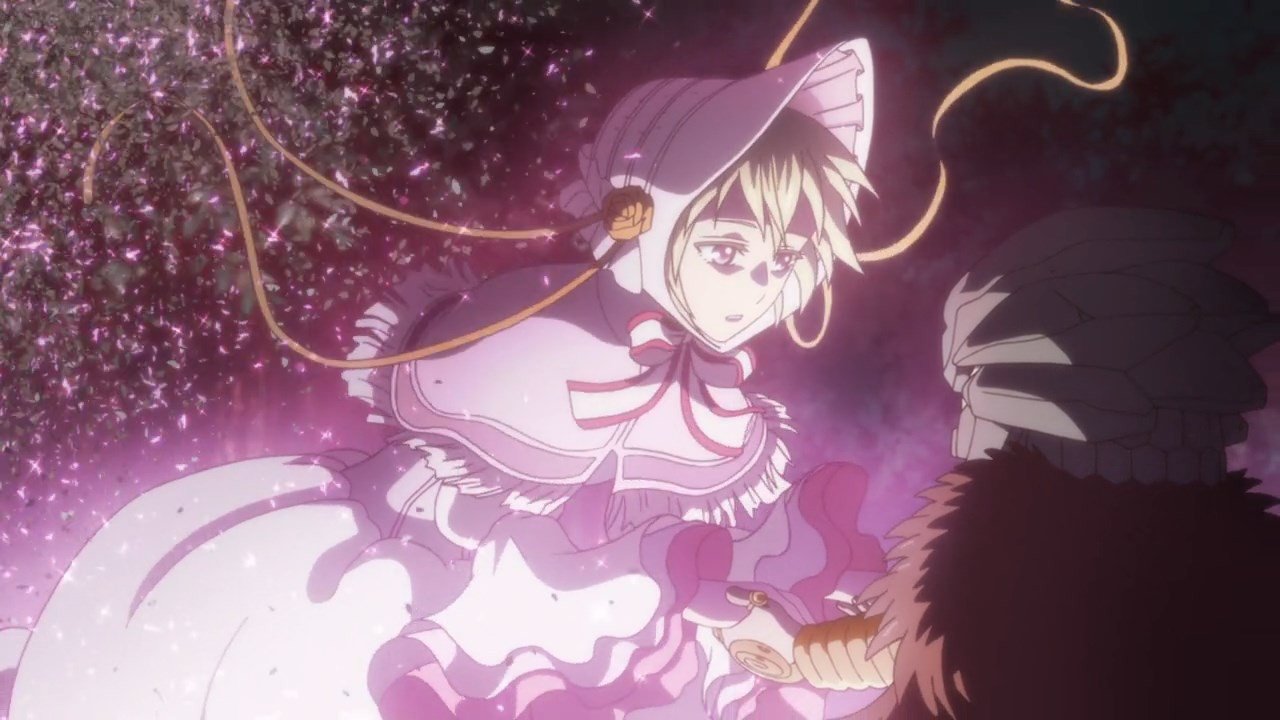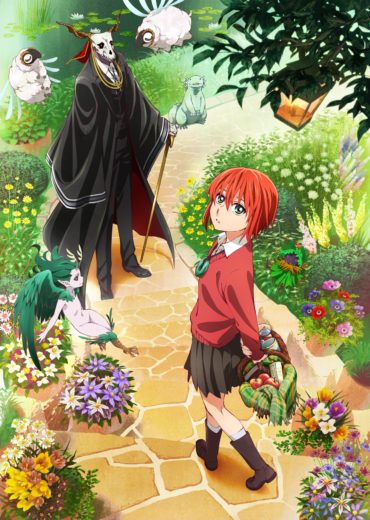The Ancient Magus’ Bride Part Two Review
“A tale about learning to see the beauty of an often unkind world” wasn’t just a flashy tagline from The Ancient Magus’ Bride’s first trailer. It was also a promise to the girl we first met stood atop an auction house stage, offering herself to anyone with a purpose for her. Chise’s introduction to the world of magic has seen spectacles like a moonlit fairy dance, and the tragedy of a killer’s corrupted soul, but it’s in this final volume that the series truly fulfils its promise.
While the first volume of The Ancient Magus’ Bride introduced Chise to the many corners of the magical world, now that she’s more accustomed to the folklore of her new daily life, the series moves to focus on what it does best: being a stunning character drama that just happens to play out against a fantasy backdrop.
Relationships and what they mean to those intertwined by them is a recurring theme woven into the narrative cloth of this release, from dramatic stories like an archaic fae threatening to erase siblings’ memories of each other, to an unexpectedly heart-melting glimpse at what a full house means to the typically quiet Silky. At the centre of all this however, are the young Chise Hatori and the ancient magus, Elias Ainsworth.
It can sometimes be easy to forget that Elias’ role is more than just the catalyst of Chise’s transformation, so I was delighted to see him finally acknowledged as a true deuteragonist, with an overdue spotlight given to his own flaws and development.
While Part One gave glimpses of a younger Elias, it’s fascinating to see how, despite how learned he became in the mystic arts, his intimidating appearance is contrasted by a child-like emotional immaturity. Feeling his sense of “eureka” as he lifted his flame-eyed, skull head in response to Chise diagnosing an emotion of his as “loneliness” was a real testament to how this series can make us empathise with even the unlikeliest characters.
Not all feelings he experiences are wrapped in cute bows, however. I found Elias experiencing jealousy to be one of the most fascinating, yet disturbing moments of the entire series – especially when you consider the magical prowess behind someone with such emotional vulnerability. Elias’ position among the human and fae has always been blurred narratively, but when his actions led to Chise looking at him with a mix of fear and anger, it did make me think whether Elias is more human, or monster.
Conversely, The Ancient Magus’ Bride’s nuanced character building also led me to empathise with an unlikely character less crafted series would have left irredeemable: Cartaphilus. If you’re confused as to why I would say such a thing about a figure previously shown as delighting in sewing corpses together and tricking a husband into turning his terminally ill darling into goo, then take it as a testament to the series’ commitment to its mission.
The greatest example of The Ancient Magus’ Bride’s superb writing and the talent of original creator Kore Yamazaki however, is her understanding of mental health, and the maturity she approaches such a difficult subject with. Having the chance to see Chise’s darkest days from a perspective once considered indefensible was never about redeeming them in our eyes or Chise’s, but it is an unforgettable chance to understand how depression can sink its claws into even the best of us.
This careful respect for mental health also led to the most rewarding moment of the series for me. Sometimes, we don’t need drawn out monologues to hear how a character has grown, and what may seem like a slight trickle, can carry the depth of an ocean. Chise musing to herself about how she’s looking forward to waking up sounds inconsequential, yet it left me speechless in a very good way.
The writing isn’t the only area where the series excels however, and my delight at being supplied with blu-ray discs for this review can’t be understated, as The Ancient Magus’ Bride is without a doubt the most beautiful TV anime I have ever seen.
The bold and striking visuals keep up with the high standard set in Part One, with scenes like the night sky in a forest clearing being as enchanting as standing under the stars ourselves. The various fae ranging from the adorable friends of the forest, to the disturbing visage of Ashen Eye shows both the depth of the world Yamazaki has created, as well as its commitment to showing both the light and dark within it.
The attention to realistic detail I mentioned before returns even better than before, with places I’ve visited recreated with incredible accuracy – there’s even First Capitol Connect logos on the ticket machines at Paddington Station! For an example, here’s a photo of Soho Square I snapped last year, side by side with its appearance in The Ancient Magus’ Bride.
On an interesting and related note, while the visuals of this set’s opening theme are still moments lifted from the series, the highlighted clips have been completely changed from the series’ simulcast. Now, they both feel like a more stunning sizzle reel of what the show can offer, but also feel more suited to the song.

Fortunately, Junichi Matsumoto’s original score feels more natural in this instalment, with tranquil and whimsical tunes wrapping around scenic moments like a warm hug, and sharp, harrowing piano pieces cutting in for more shocking moments. Atsumi Tanezaki’s Chise singing a lullaby with an exhausted, almost mute voice is a remarkable highlight, while Jouji Nakata brings the same deep, intimidating tone as the Fate franchise’s Kirei to the mysterious Ashen Eye. The English dub however, remains disappointing. Brian Mathis captures the more monstrous side of Elias well, but Dani Chambers remains flat and unconvincing as Chise, while Greg Dulcie just doesn’t work as Ashen Eye.
As with Part One, the few bonus features are once again exclusive to the Blu-ray version of this release, but at least they’re nowhere near as crucial as the last volume’s OVAs. The interview with director Naganuma Norihiro and Wit Studio president George Wada begins with fluff irrelevant to our release and audience, like how they’re enjoying Anime Expo (a US convention), how the series’ US debut came to be, and what the series is about (surely you’d already know if you bought Part Two?). One interview question even erroneously refers to the series’ setting as “Victorian England” – an era that ended over 100 years ago! It isn’t all a waste however, as there are interesting tidbits about the challenges of adapting the original manga, but overall, it’s rather brief and not really worth the hype.
Despite the disappointing bonus feature however, the main feature of this release is a more than fitting conclusion to a series that’s magical in more ways than one. A tale about broken people finding peace, The Ancient Magus’ Bride is at times ugly and others beautiful. Pushing the envelope of what a fantasy series should aspire to be, it deserves to be remembered as one of the best TV anime in recent years. With rumours of Wit Studio winding down their commitment to Attack on Titan, maybe we’ll see another season one day…


